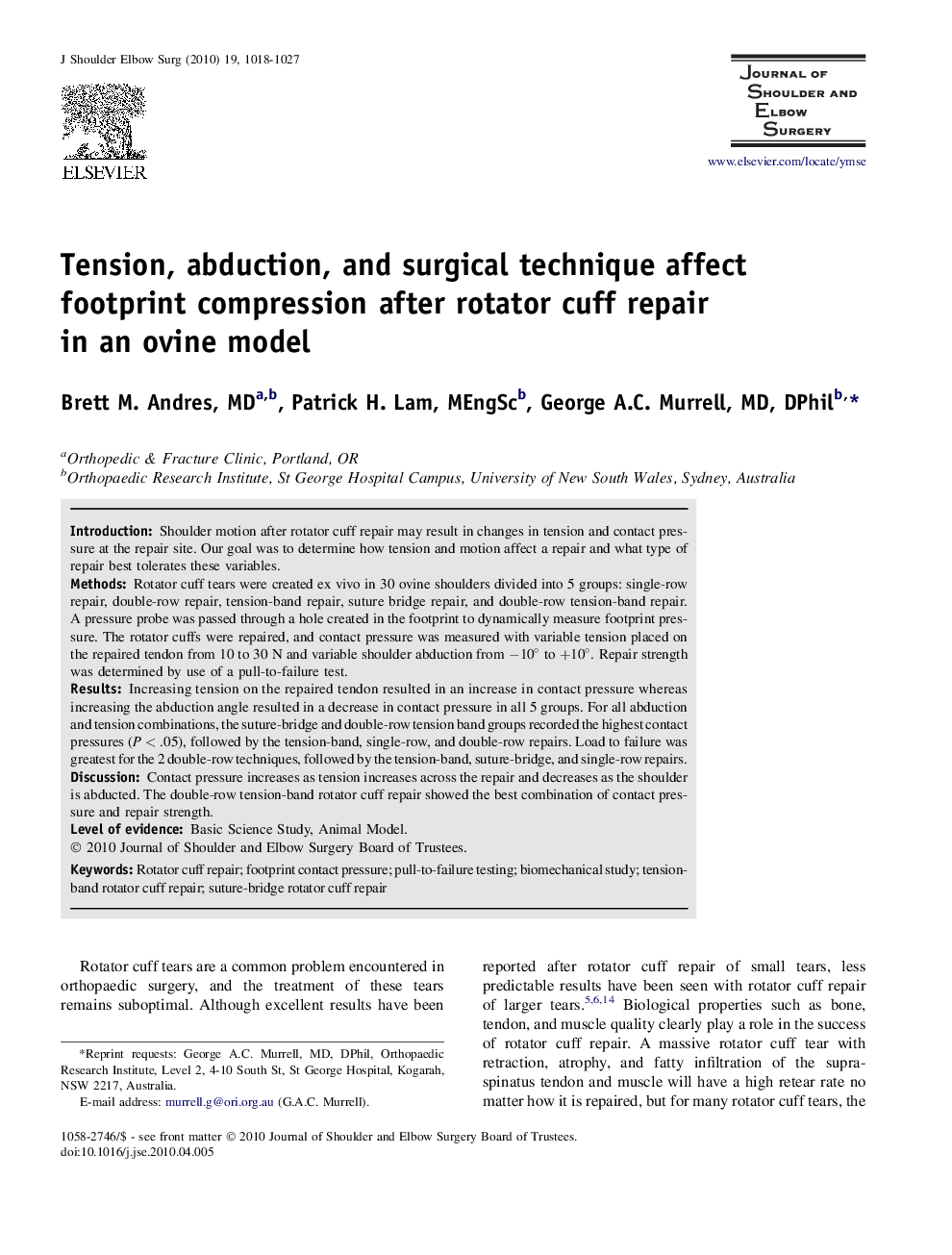| Article ID | Journal | Published Year | Pages | File Type |
|---|---|---|---|---|
| 4074658 | Journal of Shoulder and Elbow Surgery | 2010 | 10 Pages |
IntroductionShoulder motion after rotator cuff repair may result in changes in tension and contact pressure at the repair site. Our goal was to determine how tension and motion affect a repair and what type of repair best tolerates these variables.MethodsRotator cuff tears were created ex vivo in 30 ovine shoulders divided into 5 groups: single-row repair, double-row repair, tension-band repair, suture bridge repair, and double-row tension-band repair. A pressure probe was passed through a hole created in the footprint to dynamically measure footprint pressure. The rotator cuffs were repaired, and contact pressure was measured with variable tension placed on the repaired tendon from 10 to 30 N and variable shoulder abduction from −10° to +10°. Repair strength was determined by use of a pull-to-failure test.ResultsIncreasing tension on the repaired tendon resulted in an increase in contact pressure whereas increasing the abduction angle resulted in a decrease in contact pressure in all 5 groups. For all abduction and tension combinations, the suture-bridge and double-row tension band groups recorded the highest contact pressures (P < .05), followed by the tension-band, single-row, and double-row repairs. Load to failure was greatest for the 2 double-row techniques, followed by the tension-band, suture-bridge, and single-row repairs.DiscussionContact pressure increases as tension increases across the repair and decreases as the shoulder is abducted. The double-row tension-band rotator cuff repair showed the best combination of contact pressure and repair strength.
